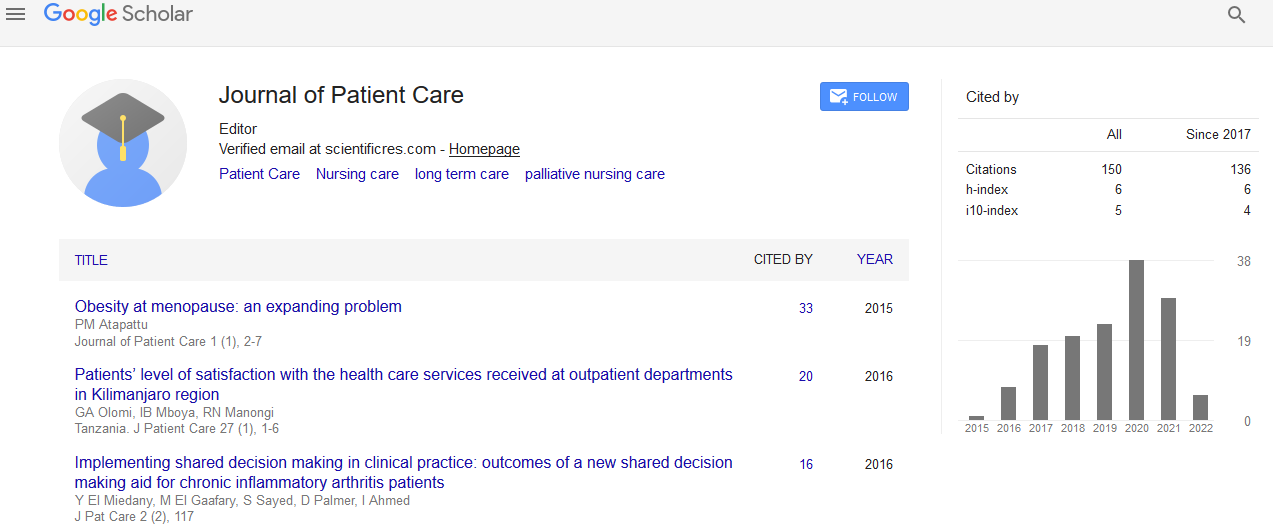Indexed In
- RefSeek
- Hamdard University
- EBSCO A-Z
- Publons
- Geneva Foundation for Medical Education and Research
- Euro Pub
- Google Scholar
Useful Links
Share This Page
Journal Flyer

Open Access Journals
- Agri and Aquaculture
- Biochemistry
- Bioinformatics & Systems Biology
- Business & Management
- Chemistry
- Clinical Sciences
- Engineering
- Food & Nutrition
- General Science
- Genetics & Molecular Biology
- Immunology & Microbiology
- Medical Sciences
- Neuroscience & Psychology
- Nursing & Health Care
- Pharmaceutical Sciences
Service quality in contracted facilities
World Congress on Patient Safety & Quality Healthcare
September 07-09, 2017 London, UK
Fauziah Rabbani, Nousheen Akber Pradhan, Shehla Zaidi, Syed Iqbal Azam and Farheen Yousuf
Aga Khan University, Pakistan
Posters & Accepted Abstracts: J Pat Care
Abstract:
Statement of the Problem: Essential quality components; skilled birth attendants, well-equipped health facilities, essential drugs and supplies, administrative capacity and referral linkages are missing in Pakistan�??s healthcare system. Contracting out services has become an attractive option for countries where there is a poor public health system and high private provider penetration. The purpose of this paper is to explore the readiness of contracted and non-contracted first-level healthcare facilities in Pakistan to deliver quality maternal and neonatal health (MNH) care Methodology & Theoretical Orientation: Using a cross-sectional study design, two rural health centers (RHCs) contracted out to an NGO in Pakistan were compared with four government managed RHCs. A quality care tool; Balanced Scorecard (BSC) was designed ( Fig 1.) to assess RHC readiness to deliver good quality MNH care. In total 20 indicators were developed, representing five BSC domains: health facility functionality, service provision, staff capacity, staff and patient satisfaction. Validated data collection tools were used to collect information. Pearson �?2, Fisher�??s Exact and the Mann-Whitney tests were applied as appropriate to detect significant service quality differences among the two facilities. Findings: Contracted facilities were generally found to be better than non-contracted facilities in all five BSC domains. Patients�?? inclination for facility-based delivery at contracted facilities was, however, significantly higher than non-contracted facilities (80 percent contracted vs 43 percent non-contracted, p¼0.006). Contracted out facilities were found to be comparatively better than non-contracted facilities regarding various aspects such as Drugs, supplies, equipment availability, laboratory services and BemONC signal functions, HMIS records, waste disposal mechanisms and service delivery guidelines. Conclusion & Significance: The study shows that contracting out initiatives have the potential to improve MNH care. There is however, a need for sound governance and management to bridge staff capacity and to supervise staff-performance. This is the first study to compare MNH service delivery quality across contracted and non-contracted facilities using BSC as the assessment framework.

